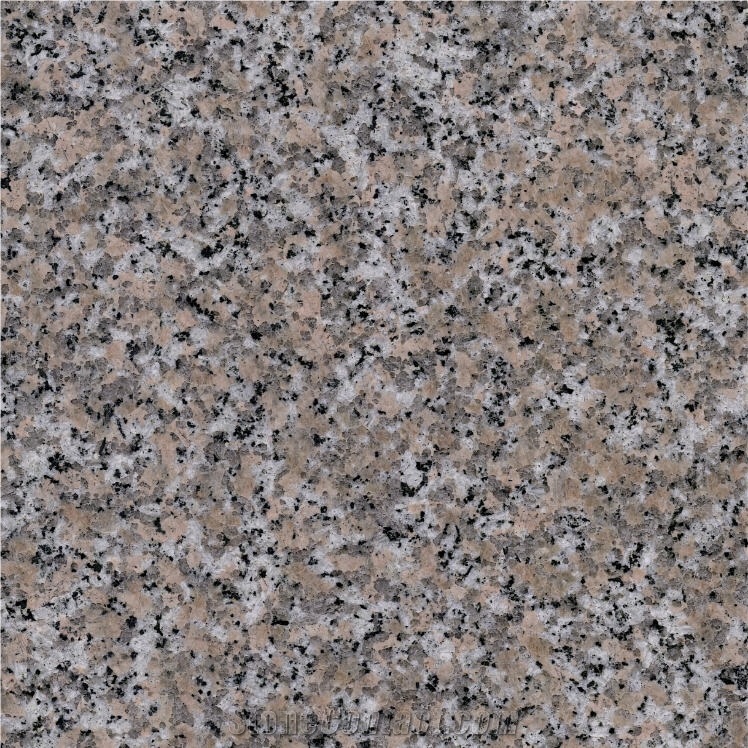Mannari Ishi Granite
 Japan
(Okayama Prefecture,Chūgoku region, Honshu Island)
Japan
(Okayama Prefecture,Chūgoku region, Honshu Island)
Mannari Ishi is a fine‑ to medium‑grained granite featuring shades of white, black, brown, and pink, blending into an ethereal misty mauve tone. It is quarried in Okayama Prefecture, within the Chūgoku region of Honshu Island, Japan.
Texture & Pattern
Texture: Medium‑grained, homogeneous crystalline structure with interlocking quartz and feldspar grains.
Pattern: Uniform pinkish feldspar matrix, interspersed with darker minerals (e.g. biotite or accessory mica/quartz) providing visual depth
Chemical & Mineral Composition
While no specific compositional breakdown exists for Mannari Ishi, granite typically consists of: Quartz: 20–60% by volume
Plagioclase + K‑feldspar: 10–65% by volume
Accessory minerals: Mica (biotite or muscovite), minor hornblende or tourmaline. In Japanese granites like Inada, chemical resistance is due to quartz (~34%) and feldspar (~62%). Man’nari Ishi likely shares similar mineral proportions and is chemically stable.
Mechanical Properties & Strength
No specific values for Mannari Ishi are publicly available. As a general reference:
Hardness (Mohs scale): Granite generally ranges between 6–7, reflecting quartz and feldspar hardness.
Typical Sizes & Surface Finishes
Slab thicknesses: Commonly available in 2 cm and 3 cm thicknesses; custom sizing may be possible.
Surface finishes offered: Polished, sawn cut, sanded, rock‑faced, sandblasted, tumbled, and flamed finishes—offering options for both smooth and textured aesthetics.
Usage Applications
Mannari Ishi is versatile and suitable for:
Monuments, Gravestone, Pagoda
Exterior and interior wall and floor cladding
Countertops, monuments, stairs, window sills
Decorative pieces: mosaic, fountains, pool caps, wall capping japanese-gardens.
It is prized in Japanese architecture for its low porosity, weather resistance, and durability in humid or urban climates.
Maintenance
Sealing: Recommended periodically—granite is generally resistant to staining, especially darker granites—but sealing prevents water and oil absorption.
Cleaning: Avoid acidic cleaners (like vinegar); use pH-neutral stone cleaners.
Heat and scratch resistance: Excellent thermal stability; can resist hot pots but avoid sudden thermal shock. Quartz and feldspar content provide scratch resistance. As one countertop fabricator noted: “It will not scorch, but the thermal shock can crack it”
The request includes: 1. surface finished, size 2. quantity required







